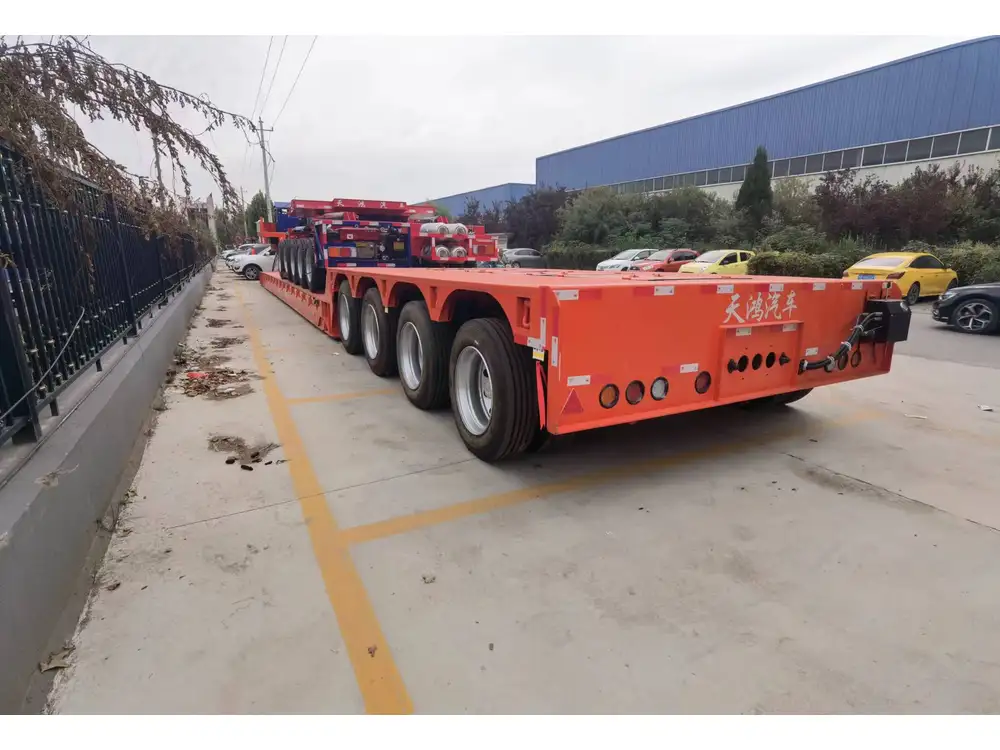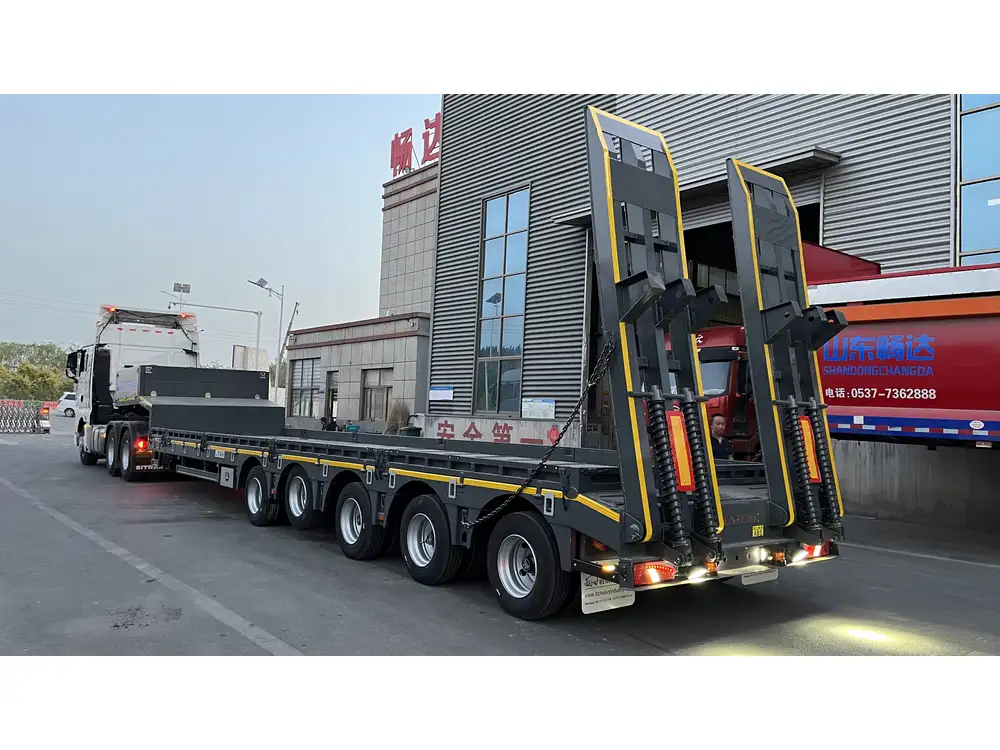In the world of heavy transportation, understanding the nuances of vehicle design is crucial. From maintaining regulatory compliance to enhancing safety, every element of a semi-trailer plays a significant role. One component that often sparks debate among transport professionals is the mud flap. This article aims to dissect the need for mud flaps on semi-trailers comprehensively, exploring their function, benefits, legal requirements, and even alternatives.
What Are Mud Flaps?
Mud flaps, or splash guards, are flexible panels located behind the tires of trucks and trailers. They serve a fundamental yet crucial purpose: to shield the road from debris, mud, stones, and water that may be dislodged by tires as they rotate. The material used in mud flaps varies, with options ranging from rubber to plastic composites.
Functionality of Mud Flaps
Mud flaps are not merely accessories; they fulfill a range of functions that contribute to safer driving conditions:
- Debris Deflection: Preventing rocks and mud from being ejected when tires spin, thus reducing damage to vehicles behind.
- Road Longevity: Protecting road surfaces by minimizing wear and tear caused by flying debris.
- Safety Enhancement: Reducing visibility obstructions caused by mud splatter on rear vehicle windows.
- Fuel Efficiency: Helping to streamline airflow around the tires, potentially improving fuel economy in long-haul scenarios.

The Legal Landscape: Are Mud Flaps Mandatory?
Understanding the legal stipulations concerning mud flaps can help companies avoid costly fines and ensure compliance on the road.
United States Regulations
In the U.S., the Federal Motor Carrier Safety Administration (FMCSA) provides guidelines that regulate the use of mud flaps on commercial vehicles. Regulations can vary by state; however, common standards include:
| Regulation | Description | Notes |
|---|---|---|
| Length | Mud flaps must extend down to within a certain distance from the ground, usually 8-12 inches. | This prevents debris from escaping into the air. |
| Width | Must be at least as wide as the tire tread. | Ensures maximum coverage and protection. |
| Materials | Durable materials to withstand environmental conditions. | May vary by manufacturer and intended use. |
International Standards
For those operating internationally, it’s crucial to understand that many countries have their own regulations regarding mud flaps:
- Europe: The European Union has guidelines which dictate the kinds of vehicle modifications permissible, including mud flap specifications.
- Canada: Canadian regulations are similar to U.S. guidelines, stressing the importance of mud flap dimensions for safety and compliance purposes.

Benefits of Having Mud Flaps on Semi-Trailers
Enhancements to Safety
Safety is paramount in the transport industry, where thousands of tons traverse highways daily. The inclusion of mud flaps significantly reduces the likelihood of accidents by mitigating hazards posed by flying debris. Here are some statistics to consider:
- Accident Reduction: Studies indicate that vehicles equipped with mud flaps are involved in 15% fewer rear-end collisions caused by debris.
Cost-Effectiveness
Investing in mud flaps can save money in the long run. Here’s how:
| Cost Consideration | Impact |
|---|---|
| Damage Reduction | Less vehicle damage leads to lower repair costs. |
| Fuel Savings | Improved aerodynamics can lead to fuel efficiency. |
| Insurance Costs | Reduced risk often correlates with lower premiums. |

Brand Reputation
Operating a fleet that adheres to safety standards builds trust with clients and regulatory bodies. By equipping semi-trailers with mud flaps, manufacturers convey a dedication to quality and safety.
Alternatives to Mud Flaps
While mud flaps are widely acknowledged for their efficacy, there are alternatives that some manufacturers and fleet owners may consider:
- Fenders: These are enclosed shields designed to protect the entire wheel well, but they can be more expensive and may not provide the same level of debris deflection.
- Air Deflectors: These systems create a streamlined airflow around the tires and can contribute to a more efficient fuel economy, although they do not serve the same purpose in debris protection.
- Mud Guards: Similar to mud flaps but typically made from more rigid materials, they may not be as effective in flexible environments.
Comparative Table: Mud Flaps vs. Alternatives
| Feature | Mud Flaps | Fenders | Air Deflectors |
|---|---|---|---|
| Debris Protection | High | Medium | Low |
| Cost | Low to Medium | Medium to High | Medium to High |
| Fuel Efficiency | Moderate (Indirection) | Variable | High |
| Installation Ease | Easy | Moderate | Easy |

Potential Issues With Mud Flaps
Despite their benefits, mud flaps can present challenges. Here are some of the issues to consider:
Maintenance Concerns
Regular inspections are necessary to ensure that mud flaps remain intact and effective. Over time, wear and tear can compromise their functionality. Here’s a maintenance schedule to keep in mind:
| Maintenance Task | Frequency |
|---|---|
| Visual Inspection | Weekly |
| Cleaning | As needed |
| Replacement Check | Monthly |
Compliance Confusion
Different states and countries have varying requirements for the size and material of mud flaps, leading to confusion. Fleet managers should establish a clear compliance strategy, ensuring that every vehicle meets the necessary standards before deployment.

Conclusion: Do You Need Mud Flaps?
The answer to whether semi-trailers need mud flaps is not just a matter of law; it’s a multi-faceted decision that involves considerations of safety, cost, and overall vehicle performance.
- Legal Compliance: Most jurisdictions require them.
- Safety: They significantly reduce the risk of accidents caused by debris.
- Cost-Efficiency: The investment in mud flaps yields dividends in reduced repair costs and improved fuel efficiency.
Final Recommendations
Transport companies should integrate mud flaps into their fleet management strategies, fostering a culture of safety and compliance. Doing so not only enhances operational efficiency but also upholds the integrity of the transport industry. Attention to detail in the selection, installation, and maintenance of mud flaps can lead to substantial improvements in both safety and cost savings—a true win-win scenario in the relentless pursuit of efficiency.



